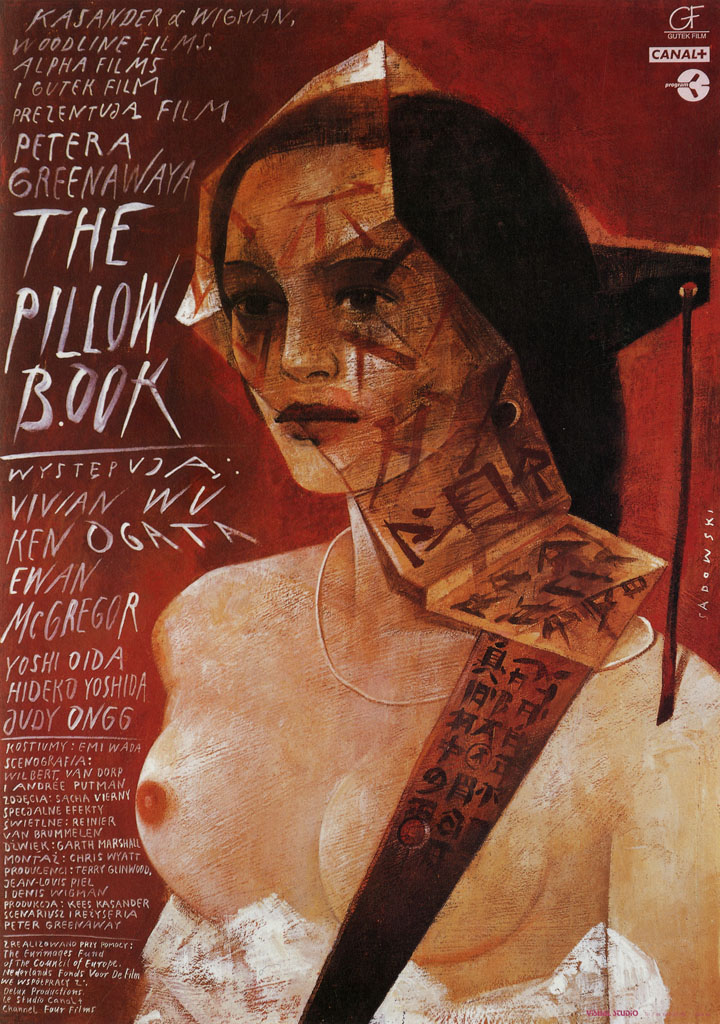Shooting Down Pictures

Largely received with diffidence upon its initial release, Peter Greenaway’s tour de force can now be respected as a bold vision of movie art in the multimedia age. Taking inspiration from Japanese courtesan Sei Shonagon’s 17th century novel of the same title, Greenaway tells a story of a Japanese-Chinese woman’s efforts to transform her childhood fixation on bodily calligraphy into a career as a writer, while avenging her father’s sexual humiliation at the hands of his publisher. These themes of the artist’s struggle to express herself while taking revenge against the abuses of the older establishment are nothing new to Greenaway’s filmography (see The Draughtsman’s Contract, The Cook, The Thief, His Wife and Her Lover). What is new is a distinctly feminine narrative voice that enhances the innate sensuality of the project; an unabashed mixing of languages and cultures in a stew of chic global mongrelism; and a hypnotic flow of screens within screens and texts used as creative adornment. (The film toys with foreign film viewing conventions, foregoing subtitles for some scenes in Japanese while deploying them elsewhere in ways so artistic you wonder why no one else bothers).

To Browse and Read the Archive
2 comments:
I agree with your basic assessment of the movie, however you have some details wrong. Sei Shonagon's book is not a novel - it is her memoir/diary/book of lists; and was written in the 10th-11th century, not the 17th. The title 'Pillow Book' derives from the Japanese practice of sleeping on hollowed wooden pillows within which such books were kept.
.guy
it is shooting down picture's assessment, but thank you for your opinion
Post a Comment